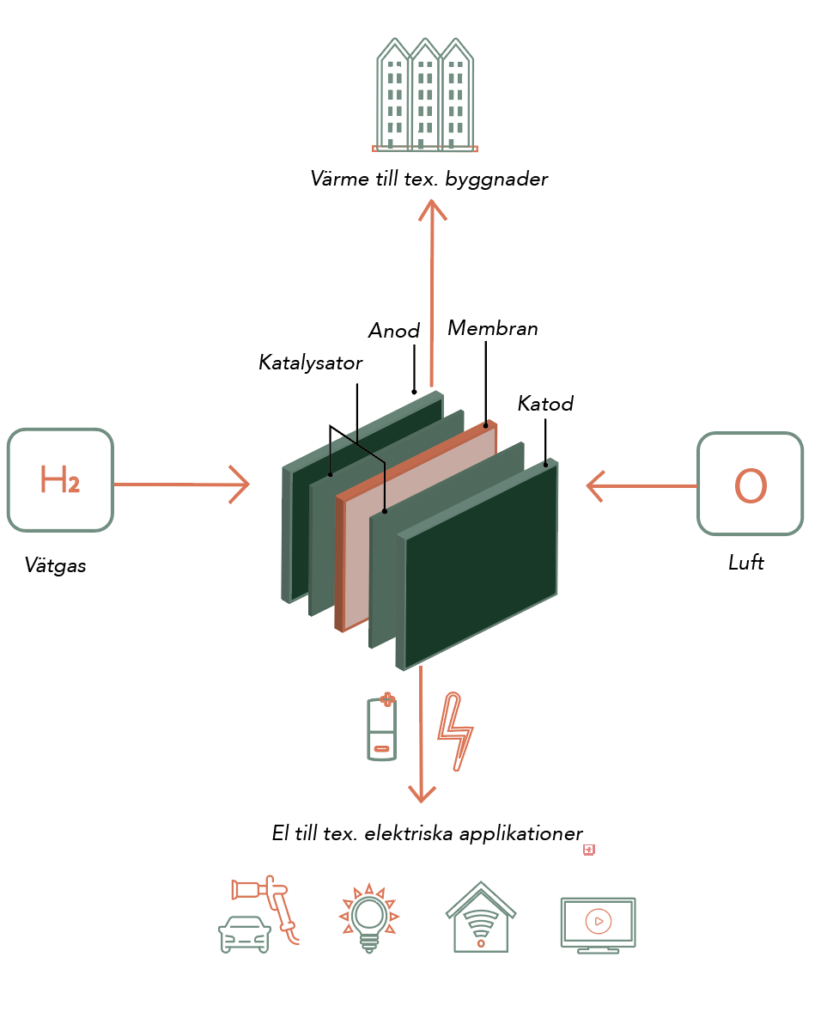Renewable energy sources
The new renaissance hydrogen has received is based entirely on renewable hydrogen. The renewable hydrogen will be an important piece of the puzzle to reach Sweden’s goal of having zero emissions of greenhouse gases by 2045. Electricity from sun, wind and water and biomass can be converted and stored as hydrogen. In Sweden, we have plenty of renewable energy in our electricity system, moreover, renewable energy is cheap today and prices are expected to drop. Hydrogen can be extracted from many sources.
Nuclear power
Hydrogen can be produced from the electricity produced by nuclear power or with the help of next-generation nuclear reactors. The research is looking at using new coolants instead of water, directly from heat and a catalyst. The latter means that the total efficiency from heat in the reactor to hydrogen can be much higher, because the heat losses in the electricity generation are avoided. However, it requires that the next generation reactors to be completed and commercialized.
There are several ways to use nuclear power to produce hydrogen, here are some existing and future technologies:
- Conventional electrolysis (low temperature electrolysis) by using electricity from nuclear power. Must take place at the nuclear power plant or at another location through an electrical connection. The heat from the nuclear reactor is not used.
- High temperature electrolysis (solid oxide electrolysis (SOEC) is the most advanced technology) using electricity and heat from the nuclear reactor. About 25% of the energy is supplied in the form of heat, because a high temperature is required for the process. The technology is starting to be commercialized.
- Thermochemical splitting uses only high-temperature heat to split water into oxygen and hydrogen. The advantage of this method, is that the step where heat is converted into electricity by using steam turbines can be removed. By using steam turbines instead of thermochemical splitting, around 70% of the energy is lost. This technology is not commercial yet, but research is being conducted. The overall efficiency is calculated to be between 40% 50% from heat to hydrogen., which is roughly double that if the electricity is only used directly in a low-temperature electrolyser and the heat is not used. In order to achieve the required temperatures, targeted solar energy can also be used.
Natural gas and biogas
Conversion of natural gas is the most common way to produce hydrogen in the industry Hydrogen is for the most part only a short intermediate step to the production of ammonia and methanol, for example.
Oil and coal
Other hydrocarbons such as oil and coal can also be used to produce hydrogen, which is done on a large scale in traditional industry.
By-product
Large amounts of hydrogen arise as a by-product in industry, such as in chlorine/chlorate production. Where the process involves splitting salt into the components sodium and chlorine through electrolysis of salt water. This hydrogen is often recovered in chemical clusters, but much work remains to do this in an environmentally and economically optimal way.

















